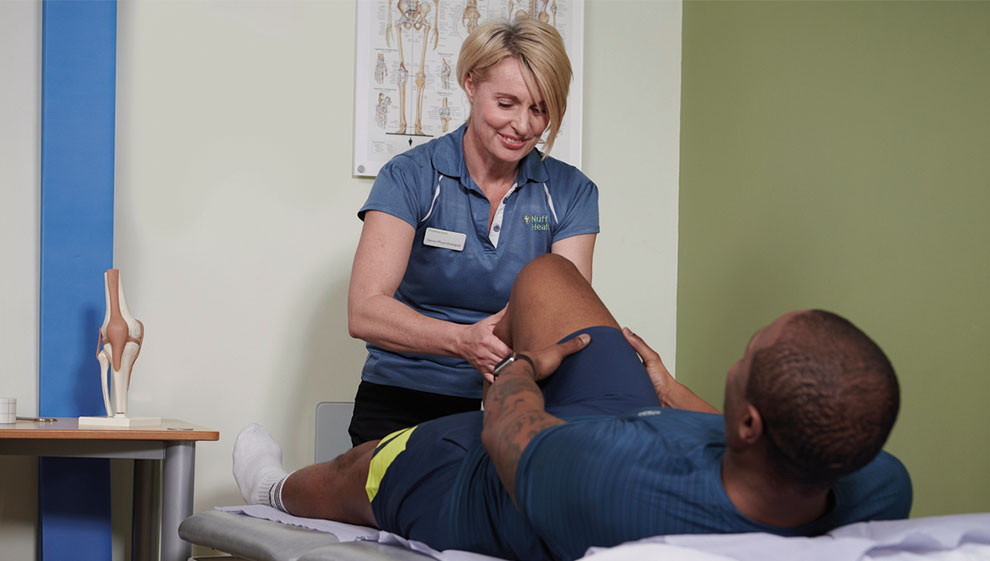Why exercise is actually good for your joints
- Overview
Many of us regularly say things like "I don’t do that exercise because it’s bad for my joints" or "I can't exercise because of my knees".
The reality is that gentle exercise actually helps protect your joints by building up the muscles and healthy cartilage around them. Keep reading for more information on how healthy movements can help you preserve the health of your joints as you get older.
What happens to my joints when I exercise?
When exercising, your blood pumps faster around your body, providing the membrane with a plentiful supply of nutrients, which are infused with fluid. What’s more, running and other high-impact exercises, have been shown to force this nutrient-rich fluid into the cartilage, keeping it healthy.
If you already suffer from joint pain, high-impact exercises that aggravate this pain should be avoided, at least in the short term. There are plenty of exercises that you can do to build strength in your joints. If you want to be able to do high impact exercise, the key is to introduce it slowly and listen to your symptoms to find the right intensity for you.
How exercise can relieve joint pain
An added benefit of exercise is it can help to prevent and relieve pain in your joints. We know that improving our cardiovascular health can help reduce overall inflammation that contributes to our pain. Furthermore, the more you move, the less stiff and fatigued you will feel.
Exercise can also affect your mental outlook, flooding your brain’s receptors with ‘feel good’ endorphins, which both make you feel happier and change your perception of pain. You might find you're more motivated and that pain becomes more manageable after exercise.
Which exercises work best for joint pain?
For an idea of which exercise work best for joint pain, take a look at the video below. All these exercises are professionally accredited and included as part of our joint pain programme.
Related Content: Lower Body Stretch with Olivia #1
Excellent. This has really helped my knee issue, thanks. Lesley
A great stretch session for after running. Marion
This video is part of our on-demand 24/7 content. To view more videos and subscribe to our 24/7 virtual gym click here.
When to see a professional
If you suffer with joint pain and are concerned about exercise, it’s worth consulting a personal trainer or physiotherapist for advice. A professional has all the knowledge to get you working out in a way that works for you and your body.
Our free 6-month joint pain relief programme
If you suffer with chronic joint pain and don’t know where to turn, take a look at our free 6-month joint pain programme. Put together to help individuals independently manage and treat chronic joint pain, our programme pairs you with a recovery specialist to help you understand all there is to know about joint pain.
The course covers lifestyle factors, exercise, what you can do to improve your condition, and even includes a weekly educational workshop.
- Interested? Click here to find out more about the programme
Building strong cartilage in your joints

Arthritis occurs when the cartilage that cushions your joints changes and starts to provide less cushioning to the joint.
This reduced space between the bone can lead to pain and discomfort in some people. This can get so bad that it starts to limit what they want to do for work and leisure.
Your joints are surrounded by a thin piece of tissue connected to your blood supply called the synovial membrane. This membrane produces the fluid that lubricates your joints.
Cartilage has no independent blood supply, so instead, it gets its nutrients from this fluid.
What causes joint pain and arthritis?
We are not 100% sure yet what exactly causes arthritis, but we do know that it’s not all down to wear and tear on the joints from exercise. It seems to be a result of inflammation in the joint that can be made worse by previous injuries and other lifestyle factors, such as being overweight, that causes the cartilage to degrade. Research has shown that exercise can actually reinforce cartilage.
Muscles and ligaments – your joints' support network
Your knees, hips and other joints rely on a supportive network of muscles to keep them sturdy. So exercises that build these muscles and ligaments will strengthen your joints, making you less prone to injury in the long run.
Strength training uses weight to gradually build muscle tone. If you’re new to exercise, you should begin with bodyweight exercises, working your way onto weight machines, which provide stability while you train. You can then move onto free weights, such as kettlebells or dumbbells. Again, the key is to introduce anything new slowly and steadily.
Suffer with joint pain? Click here to try a professional workout for strengthening your joints
Last updated Friday 25 October 2024
First published on Tuesday 2 October 2018
